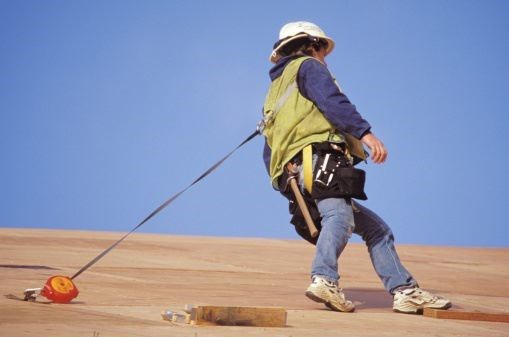If it can happen to a former B.C. premier, it can happen to anyone.
In 2012, WorkSafeBC cited Gordon Campbell after a roofer working on his vacation home in Sechelt fell nearly 18 feet to his death. An investigation revealed he was wearing a fall arrest harness but hadn't hooked it into an anchor line.
It also turned out Campbell had not assigned the role of "prime contractor" to any of the companies working on renovations to the home, which meant he was legally responsible for coordination and establishment of health and safety compliance on the work site.
Fortunately for him, WorkSafeBC opted to simply issue Campbell a written order of what to do to comply in the future and went after the roofer's employer in terms of a penalty.
But if there is a lesson to be learned, it's to take the extra step of ensuring any contractor you hire is registered with WorkSafeBC before making the hire. That's done by asking for the contractor's account letter and clearance letter, which confirms the firm is registered and has been paying premiums.
It can also be done by going to www.worksafebc.com. Under Insurance, click on "Get a clearance letter" and then under public access, click on the "Get a Clearance Letter" button and fill out the fields.
If the contractor is not registered or not in good standing with WorkSafeBC, the agency can go after the homeowner for the premiums the firm owes. That said, WorkSafeBC director of assessments Deepak Kothary said homeowners are generally given a bit more leniency.
"But, it's a good way for homeowners to protect themselves and basically make a reasoned decision to hire someone," Kothary said.
Of the 48 fines WorkSafeBC has levied against Prince George firms since January 2013, 25 of them were for workers failing to use protection while working on roofs.
Province-wide, the general construction category, which includes roofers, represents a quarter of all fall-from-elevation time-loss claims, and 36 per cent of fall-from-elevation serious injuries.
WorkSafeBC director of field prevention services Dan Strand said anyone who is working at levels 10 feet above ground or higher needs to have proper protection in place.
"Unfortunately, we're finding more often than not, they're not taking the proper precautions," Strand said.
He said WorkSafeBC evaluations over the years have narrowed the causes down to apathy and complacency.
"We've found that roofers are knowledgeable," Strand said. "They know that working at heights is a risk, just like anyone in the general public would recognize...We've even found supervisors working at heights with fellow employees and they have all of the equipment sometimes on the roof or in the vehicle."
And they do this despite the fact that even for the untrained bystander, it's easy to see when a worker is not properly tied in or protected. He said members of the public have even taken photos of unprotected workers to WorkSafeBC.
Likewise, Strand said it's easy to see when proper practices are in use.
"It's quite evident when you're wearing a harness and when there is a lanyard that's attaching you to a solid surface," Strand said.
- with files from Pedro Arrias, Victoria Times-Colonist, Jeff Lee, Vancouver Sun



